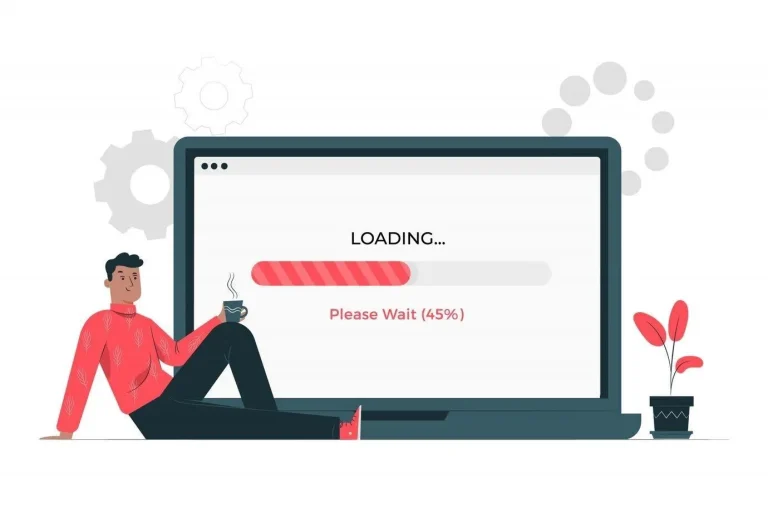Change is inevitable in the adtech industry!
Impressions, clicks, and ad viewability are scrutinized for their limitations in measuring ad performance. Hence, a new metric called attention came to the marketer’s rescue.
Attention metrics are gaining traction for providing granular insights, going beyond indicating that the ad is seen. They provide data on whether the audience has interacted with the ad or had its impact on them.
As media buyers are increasingly prioritizing “attention” to choose ad inventories, the publishers have a new landscape to deal with.
Does this attention prevalence demand publishers to work more? How can they change this attention game to a favorable situation?
This article explores these publishers’ concerns in more detail. Read on to learn how publishers can thrive and increase ad revenue in the attention era.
Table of Contents
- Attention Metric: A New Way of Measurement
- Why Should Publishers Care About Attention Metrics?
- Advertiser’s Perspective On Attention: Moving Away from Viewability
- Is Attention Metric Another Hurdle Decreasing Publisher’s Ad Revenue?
- Contextual Advertising to Publisher’s Rescue
- Attention Metric Lacks Standardization
- Tips to Improve Ad Attention
- Attention Era Begins
Attention Metric: A New Way of Measurement
Attention is an IAB-recognized metric that measures how deeply users engage with or interact with digital ads. It is an industry-wide accepted metric that measures the intensity of the ad’s brand message being observed and recalled.
Attention metrics are more efficient than traditional metrics like impressions and clicks. They are calculated using measures like the time of the day the ad is viewed, eye-tracking, ad frequency, ad creative design, ad clutters, etc. Considering all these, the attention metric determines the finer accuracy of the extent to which the ad has gained the users’ attention.
Why Should Publishers Care About Attention Metrics?
As a publisher, optimizing ads to improve attention leads to massive benefits.
Advertisers prefer attention: Ad inventory that gets a lot of attention has a high buyer demand. Nowadays, advertisers are even grading the ad spaces on sites to infer the degree of attention their ad will get and its subsequent outcomes. They make ad budget and bidding decisions depending on the attention data, focusing on opportunities to engage viewers who are actually reading the content.
Attention gives data: The attention metric gives more granular insights, like the instances that catch users’ attention and their motivation to watch and click the ads. When you work on improving attention, you can collect a lot of data. Further, you can use the data to decide on ad formats, sizes, and placement to improve your ad revenue potential.
Attract premium demand: You can show ads from premium demand partners by improving the attention metric of your ad inventory. Not all advertisers demand high-attention inventory because they know they have to pay higher in return for the clicks and sales they get. Only the premium demand partners will prefer attention and bid high CPM for your ad inventory.
Improved revenue: A study by IPG Media Lab found that ads with higher attention generated 2X higher recalls than impression-based ads. Also, personalized ads based on individual user interests outperform demographic targeting in increasing attention. Overall, improving attention metrics increases views, clicks, and conversions of your ads. Eventually, you will get high CPM and ad yield.
Advertiser’s Perspective On Attention: Moving Away from Viewability
It is better to know what advertisers think about attention to get a comprehensive view of the metric.
You certainly know that moving forward, media buyers may prefer ad inventories with high attention. These days, advertisers include attention metrics in planning their budgets, campaign goals, targeting, and ad optimization.
According to the IAB report released in 2022, over a third (36%) of U.S. buy-side planned to focus on attention metrics in coming years. They made this decision because viewability is not as credible as attention.
They use different technologies, such as website grading, to choose the ad inventory that gets the most attention from users. The increase in MFA* sites is also a reason why advertisers are moving towards the attention metric.
*Made-for-advertising (MFA) sites are created only to show ads and earn money. These sites mostly do not provide valuable content for users or better output for advertisers.
Is Attention Metric Another Hurdle Decreasing Publisher’s Ad Revenue?
The adoption of attention metrics is not wide yet, but it will be soon.
Publishers are unhappy about this drastic change, especially the shift in buyers’ focus on attention in media buying. This will decrease ad revenue and pricing and reduce their inventory value.
Publishers are also confused about why they are the only ones accountable for decreased ad performance and attention, not advertisers. What part does the ad creative created by advertisers play in it? Attention will also decline if the ad creative is not compelling enough or fails to deliver the brand message.
Hence, publishers feel they are only partially accountable for the decline in attention in their ad inventory – and advertisers share the remaining.
The adoption of attention metrics undoubtedly leads to decreased ad yield. So, the publishers must find reliable solutions to overcome this, as this is going to be the future of digital advertising. Also, the path is not going to be easy, with limitations like oversaturated ads, ad blindness, and decreasing human attention span.
Contextual Advertising to Publisher’s Rescue
Considering the increased focus on attention metrics, the ad targeting based on individual user interest is becoming unreliable. On the flip side, contextual advertising is giving better results while increasing user attention.
According to a Digiday article, advertisers are focusing on adding attention metrics to content-based targeting. The reason is that these days, the accounts on any platform are shared between at least two members.
For instance, the same user email ID or subscription will be used to access the content sites by different members.
When an account is shared between mother and child or between friends, there will be a vast difference in their interests. So, targeting based on account or email ID will not drive much impact or attention as contextual advertising.
Contextual advertising is naturally relevant to the user’s interest in the content as it can increase attention by 28% more than industry benchmarks.
Hence, publishers can use contextual advertising as one of the means in the attention-driven digital landscape. All you need to do is provide valuable content and drive relevant traffic to maximize user attention and ad yield.
Attention Metric Lacks Standardization
Attention metrics are more concerned with measuring the cumulative impact across the user journey, from seeing the ad to buying the product.
This user journey differs on different platforms and contexts.
On the other hand, many attention measurement solutions are trained based on their eye-tracking experiment data and other proxy signals.
These measurement solutions cannot be applied to all kinds of sites as they offer different user experiences unless they are trained based on the website data.
Hence, the lack of standardization causes confusion and reliability concerns. As a result, the attention metric is still far from real-time implementation.
Cross-industry collaboration can make implementation reliable and provide exciting opportunities. Governing bodies, agencies, marketers, and research foundations can join hands to standardize the attention metric.
They can define a framework that can be integrated into the programmatic workflow. A common benchmark will enable better optimization and planning and will also instill confidence among advertisers and publishers.
Tips to Improve Ad Attention
Even though attention metrics are not currently standardized, but this can change quickly. So, it is better to be prepared and start improving your audience’s ad attention. Here, we have covered a few tips that you can oversee and implement:
- Use interactive and innovative ad formats like rich media and rewarded video ads. It can grab users’ attention with heightened sensory experiences. Also, the dynamic ads perform far better than the static ads.
- Running video ads in-stream at the start and middle of the content gets more attention than playing at the end.
- Outstream sticky video ads in content websites work better in captivating audiences.
- Get insights on when, where, and how to reach users with data-driven insights.
- Set the frequency capping to an optimal count to reduce ad fatigue.
- Filter ad creatives that work for your users to maintain brand safety. Analyze the CTA (Call-to-Action), creative quality, and other elements to check whether the buyers create the best ad creatives that attract attention.
- Shorter ads are better at grabbing attention. Try to implement video ads that range from 6 to 15 seconds.
Attention Era Begins
In the ever-changing digital landscape, grabbing user attention is getting more complex than ever.
So, what is the best thing to do in this constrained situation?
Simple, learn about users!
It is the only optimal way to get their attention and make your ad inventory future-proof.
Quality content and detailed user data help you choose the perfect ad placement and sizes. Therefore, you can improve your attention rate and ad revenue. On the safer side, you can at least minimize its negative impact.
Studying user interest, gathering valuable data, using advanced technologies, and resisting massive changes in the digital industry to achieve efficiency is a long journey. It needs extensive expertise and experience.
Don’t be overwhelmed; it can be done easily if you partner with the best adtech monetization partner. They will have sufficient expertise and wisdom to help you navigate the monetization process through turbulent changes.
Choosing the finest partner from the sea of choices can be complex. Leave that to us; we can connect you with a partner who fits your needs and budget perfectly.























